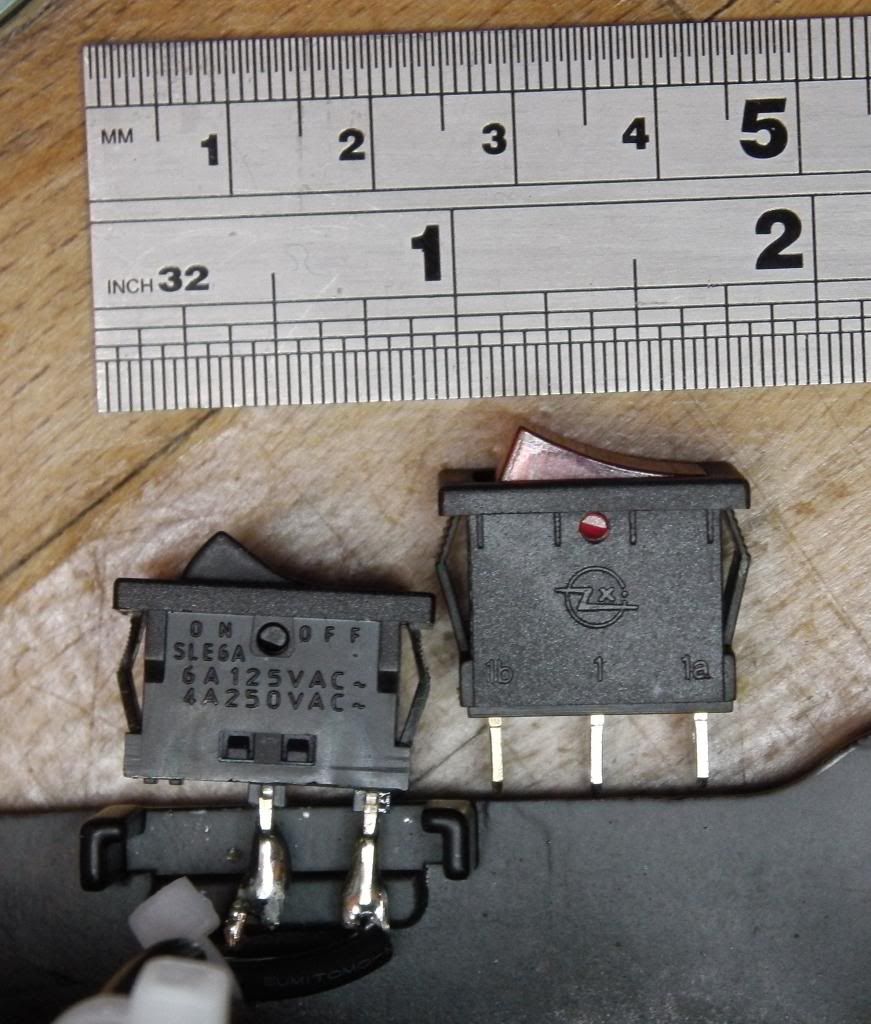Watching too many Dave's videos got me into a trouble and I got myself a HAKKO FX-888 soldering iron. Now, I watched front LED mod video, as well, but hopefully found easier way.
There are these illuminated rocker/toggle AC switches out there on eBay. But, my problem is I am not 100% sure how to replace the original switch. As you can see from pics, the original switch has two pins connected to two wires, while illuminated switch has three terminals. Now, that means, I need one extra wire?
Am I right in guessing that I should connect Black and Dark-Pink wires to silvered terminals (1 and 1a in the photo) of the illuminated switch and leave the brass-colored (1b in the photo), supposedly Ground terminal, unconnected?
Or, should I connect terminal (1a) to Black wire, terminal (1) to Dark-Pink and than pull Yellow-Green wire, from the steel plate, to terminal (1b)?
By the way, this is UK version, with UK plug and lead.

